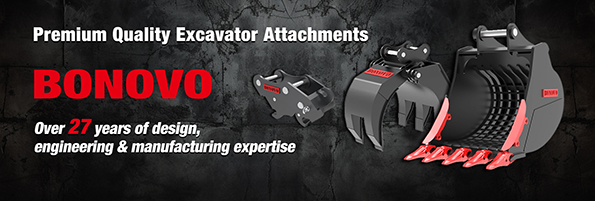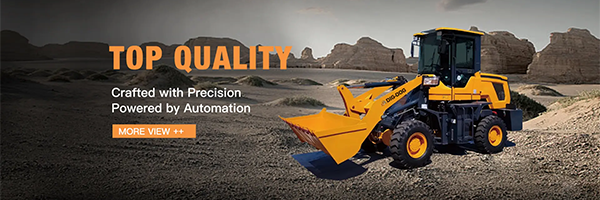Grab bucket structure and connection method The grab bucket of a grab excavator is its core working device. The grab bucket is generally composed of multiple jaws (usually two or more), which are connected together by hinges to form a structure that can be opened and closed. For example, the most common double-jaw grab bucket has two jaws shaped like a human palm and can be opened and closed relative to each other.
Excavator
The grab bucket is connected to the boom (including the boom and the bucket arm) of the excavator through a connecting device. The connecting part usually includes components such as a pull rod, a pulley block and a wire rope. The pull rod is used to transmit the pulling force from the boom, and the pulley block is used to change the direction of the wire rope so that the grab bucket can work at different positions and angles.
Hydraulic or mechanical drive principle of grab action Hydraulic drive In most modern grab excavators, the opening and closing action of the grab bucket is driven by a hydraulic system. The hydraulic cylinder is installed at the connection part of the grab bucket or the boom of the excavator. When it is necessary to grab materials, the hydraulic oil enters the working chamber of the hydraulic cylinder through the control valve. For example, if it is a single-acting cylinder, the hydraulic oil enters the rodless chamber of the cylinder and pushes the piston out. The movement of the piston drives the jaw of the grab to rotate around the hinge point through a mechanical transmission mechanism such as a connecting rod, so that the grab is closed. When unloading is required, the hydraulic oil is discharged from the working chamber of the cylinder, and the jaw opens and the material is released under the action of the grab's own gravity or other auxiliary devices (such as unloading springs).
Mechanical drive (less common) Some old or simple grab excavators may use mechanical drive. This method usually uses a steel rope pulley system to achieve the opening and closing of the grab. For example, a drum is installed on the boom of the excavator, one end of the steel rope is wound around the drum, and the other end is connected to the jaw of the grab. When the drum rotates, the steel rope is rolled up or down, thereby pulling the jaw of the grab to open and close. However, the accuracy and control flexibility of this mechanical drive method are relatively poor, and it is not as widely used as hydraulic drive at present.
Coordination and control of movements during work and coordination with boom movements When the grab excavator is working, the movement of the grab needs to be closely coordinated with the movement of the boom (boom and dipper stick). In the material grabbing stage, the grab must first be controlled to reach the appropriate position above the material by operating the boom and dipper stick. For example, by lowering the boom and extending the dipper stick, aim the grab at the material pile. Then control the grab to close and grab the material. During the grabbing process, the position of the boom and the closing speed of the grab need to be appropriately adjusted according to the nature of the material (such as looseness, particle size, etc.) and the difficulty of grabbing.
Accurately control the grab amount and depth In order to achieve efficient grabbing operations, the operator needs to accurately control the grab amount and depth of the grab. This needs to be achieved by observing the contact between the grab and the material and load feedback. Some advanced grab excavators are equipped with a load sensing system. When the grab grabs a certain weight of material, the system will detect the load change through the sensor and feed the signal back to the control system. The operator can adjust the degree of closure of the grab according to these signals to avoid grabbing too much or too little material. At the same time, in terms of excavation depth, by controlling the movement of the boom and the dipper rod, the grab can be accurately inserted into the material pile to the appropriate depth for grabbing.
Control of unloading action When unloading, the grab needs to be moved to the designated unloading position, which also requires the cooperation of the arm. For example, the grab is lifted and rotated above the transport vehicle or the designated unloading site. Then the grab is controlled to open and the material is unloaded smoothly. The control of the unloading action should take into account the falling direction and range of the material to avoid environmental pollution or safety hazards caused by the scattering of materials. The operator can achieve precise unloading by adjusting the opening speed and angle of the grab, as well as the position of the arm.
Mini crawler excavator,Mini crawler excavator attachments,Excavator attachments,Crawler excavator,Mini excavator purchase
Choose BONOVO for high-quality, customizable brush cutters for skid steers with fast delivery. Contact us today to discover how our superior products can enhance your land management tasks!
for more info just visit our website at www.bonovogroup.com
contact # : +86 158 6218 2088
email : sales@bonovogroup.com
How does the working device of a grab excavator work?
- BONOVO
- Counselor
- Posts: 645
- Joined: Oct 17th, '24, 02:50
- Location: China

